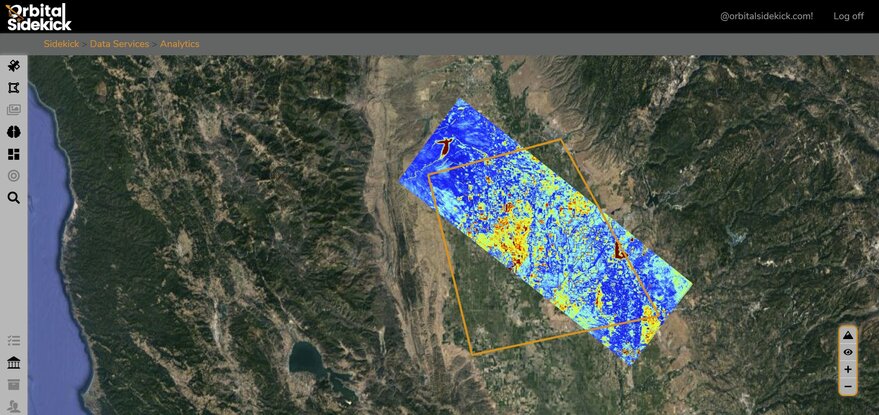Products You May Like
SAN FRANCISCO – Orbital Sidekick is speeding up its campaign to build and launch a constellation of six hyperspectral imaging satellites thanks to a $16 million U.S. government contract announced Oct. 15.
The government funding, which Orbital Sidekick matched with private investment, comes from the U.S. Air Force commercial investment group AFVentures’s Strategic Financing program with support from the U.S. Space Force Space and Missile Systems Center and the U.S. Air Force Research Laboratory, according to the news release.
With the government and private funding, Orbital Sidekick is “really gunning for rapid commercialization of our commercial product line,” Daniel Katz, Orbital Sidekick CEO and co-founder, told SpaceNews.
The Air Force is helping to accelerate the rollout of Orbital Sidekick’s constellation “because they understand there is commercial viability to what we are doing,” Katz said. “The faster we can build and launch and operate these satellites, the faster we can supply the intelligence community with hyperspectral data.”
Orbital Sidekick sent its first hyperspectral sensor, a technology demonstration, to the International Space Station in 2018. There, it gathered imagery from its perch on the NanoRacks External Platform.
Orbital Sidekick is preparing to launch its second hyperspectral sensor in December on a Loft Orbital satellite scheduled to travel on a SpaceX Falcon 9 rideshare flight.
Orbital Sidekick calls its second mission and sensor Aurora. The Aurora sensor is designed to gather imagery in a much wider spectral range than its predecessor. Orbital Sidekick’s first sensor observed imagery in visible to near infrared spectral bands, while Aurora gathers imagery from visible to shortwave infrared bands.
From a business standpoint the most important difference between the two missions is customer interest.
“We have commercial and government contracts tied to the Aurora mission,” Katz said. “It’s a big stepping stone for us.”
Orbital Sidekick’s ultimate goal is “global persistent monitoring” for energy companies and government customers, Katz said.
With a constellation of six satellites, Orbital Sidekick will be able to monitor commercial assets for customers on a daily basis, Katz said.
Orbital Sidekick does not plan to sell hyperspectral data. Instead the company plans to “gather huge quantities of hyperspectral data,” Katz said. “We do the analysis in-house to extract meaningful and actionable information that we then deliver to our customers.”
Charlene Jacka, Air Force Research Laboratory program lead for Hybrid Architecture Demonstrations (HAD), said in a statement, “Orbital Sidekick leans heavily into the implementation of a Hybrid Space Architecture for tactical [intelligence, surveillance and reconnaissance] support with its innovative hyperspectral technology and analytics platform.”
“The AFRL HAD program vision is further enabled by participating with the innovative team at Orbital Sidekick,” she added.
